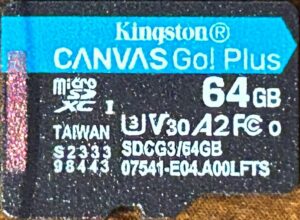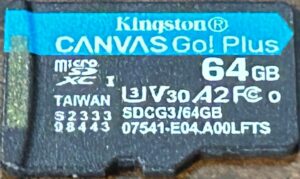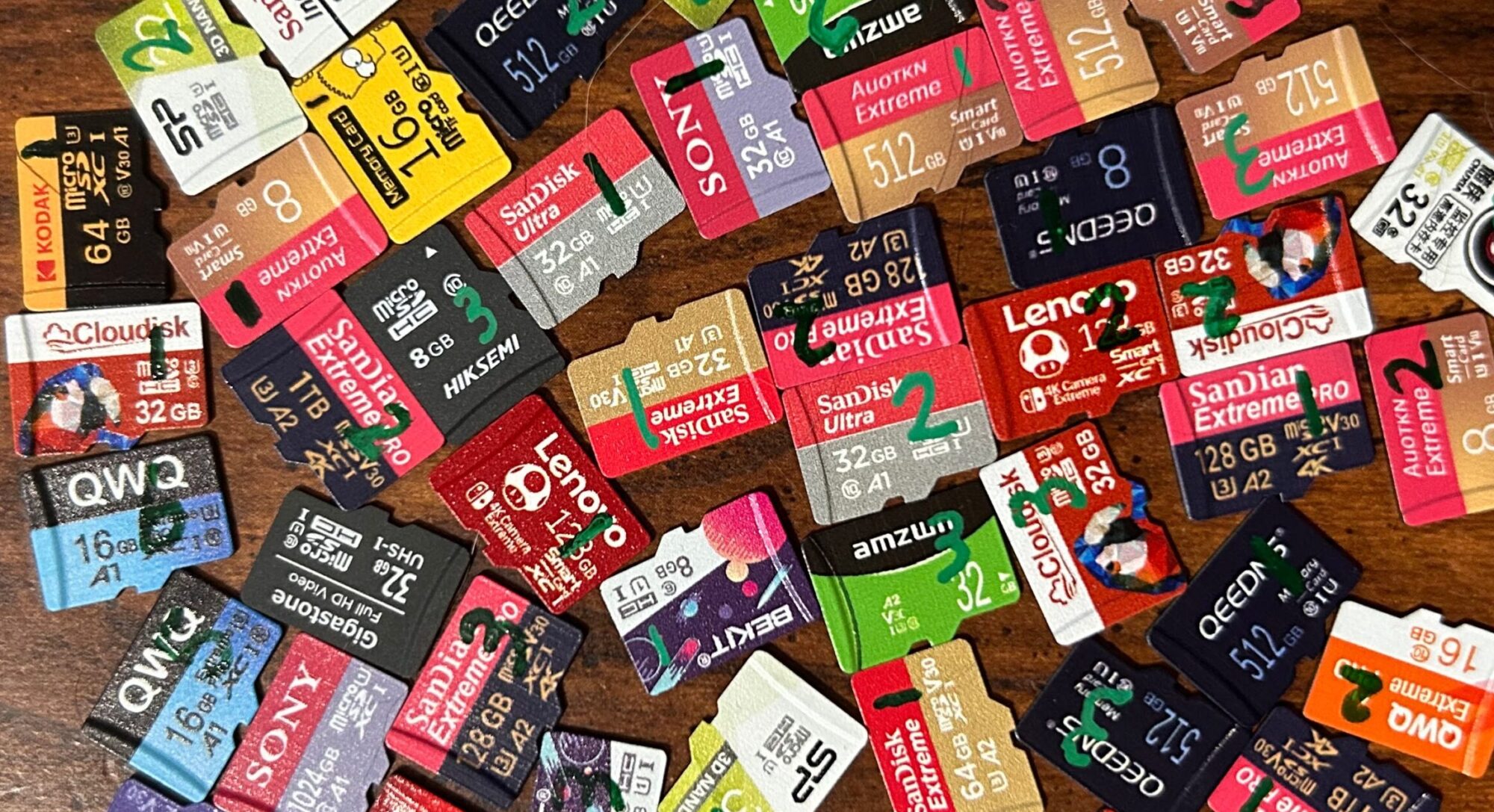Holy hell. I’m…uh…I’m gonna need a minute to pick my jaw up off the floor.
Kingston is a brand that I’ve been well aware of for many years now — and going into this project, I’ll admit that I had a bias against them — I’ve had other projects where I’ve used both Kingston and SanDisk cards, and multiple Kingston cards failed on me whereas the SanDisk cards didn’t. Regardless, I wanted to give them a fair chance.
This card is the second model of Kingston’s I purchased, but the third that I tested (because I purchased the Kingston Industrials and started testing them before starting testing on these cards). Like the Canvas Select Plus, they bear the color-shifting stripe on the edge of the card, presumably to reassure buyers that the card is genuine:
 |  |
Ok, let’s get down to brass tacks: this card absolutely smoked the competition in terms of performance — even managing to outperform the Lexar Professional 1000x. All three cards had sequential read speeds, sequential write speeds, and random write speeds that were faster than anything else I’ve tested so far. (Update: the PNY PRO Elite Prime is faster in sequential write speeds — but not in sequential read speeds or random write speeds.) With the exception of random read speeds, all performance scores were above the 97th percentile (as of the time of this writing); random read speeds were between the 80th and 88th percentiles.
This card bears the U3, V30, and A2 marks, while the package also bears the Class 10 mark. It easily surpassed the requirements for the Class 10, U3, and V30 marks. The A2 mark is a difficult one to meet — it requires a random read speed of at least 4,000 IOPS/sec and a random write speed of 2,000 IOPS/sec — and this one fell short of the mark. However, I’ll throw in my standard disclaimer: my performance testing methods do not align with those prescribed by the SD specification; it’s possible that these cards would have performed better had they been been tested under proper conditions.
Clearly, someone felt the need for speed when designing this card. If you need something to support high speed photograph/videography, I dare say — barring the results of the endurance test — that this is the card to go with.
On the endurance testing front:
- Sample #1’s first error was a single bit flip, in a single sector, during round 3,002. It has survived 11,224 read/write cycles in total so far.
- Sample #2’s first error was a single bit flip, in a single sector, during round 1,746. It survived another 4,500+ read/write cycles before it suddenly stopped responding to commands.
- Sample #3 has survived 9,593 read/write cycles so far and has not yet experienced any errors.
June 13, 2025 (current number of read/write cycles is updated automatically every hour)

